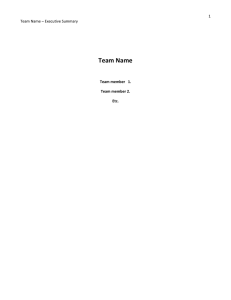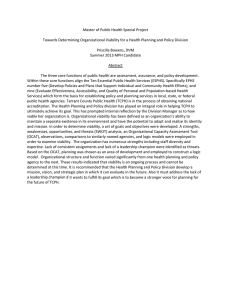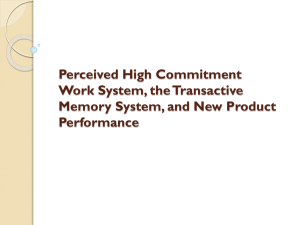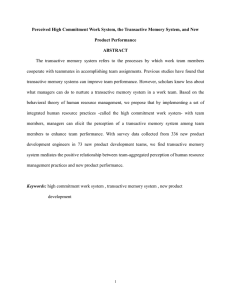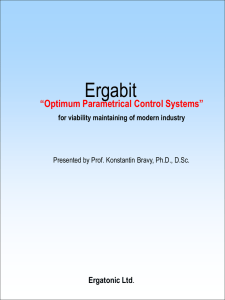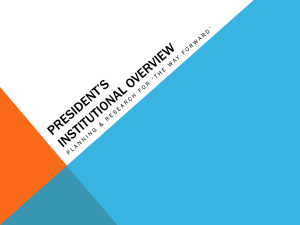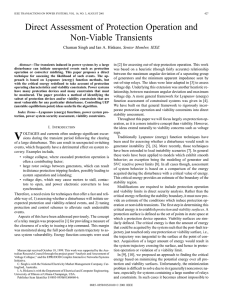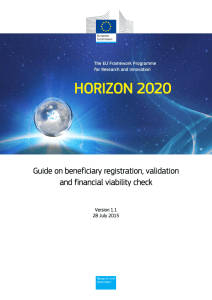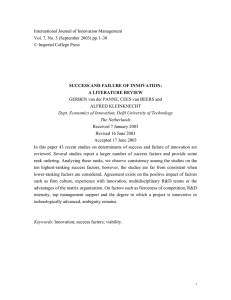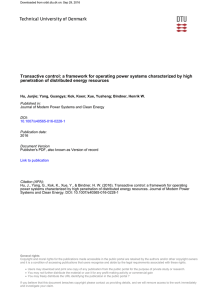Test #3 SUM .docx
advertisement
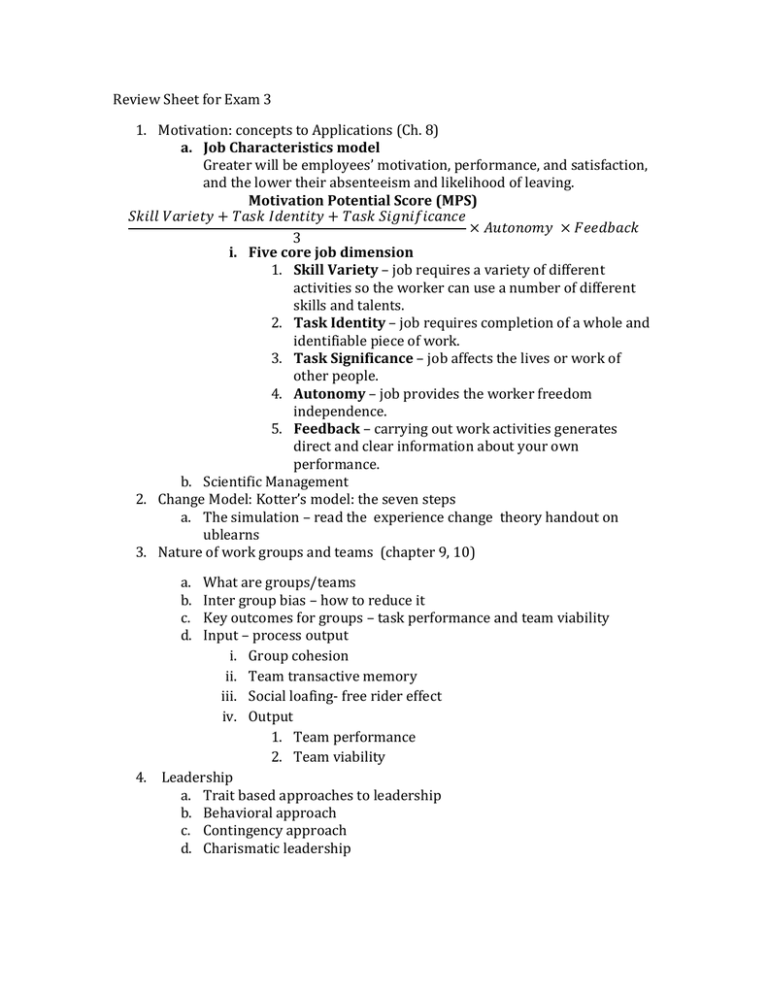
Review Sheet for Exam 3 1. Motivation: concepts to Applications (Ch. 8) a. Job Characteristics model Greater will be employees’ motivation, performance, and satisfaction, and the lower their absenteeism and likelihood of leaving. Motivation Potential Score (MPS) 𝑆𝑘𝑖𝑙𝑙 𝑉𝑎𝑟𝑖𝑒𝑡𝑦 + 𝑇𝑎𝑠𝑘 𝐼𝑑𝑒𝑛𝑡𝑖𝑡𝑦 + 𝑇𝑎𝑠𝑘 𝑆𝑖𝑔𝑛𝑖𝑓𝑖𝑐𝑎𝑛𝑐𝑒 × 𝐴𝑢𝑡𝑜𝑛𝑜𝑚𝑦 × 𝐹𝑒𝑒𝑑𝑏𝑎𝑐𝑘 3 i. Five core job dimension 1. Skill Variety – job requires a variety of different activities so the worker can use a number of different skills and talents. 2. Task Identity – job requires completion of a whole and identifiable piece of work. 3. Task Significance – job affects the lives or work of other people. 4. Autonomy – job provides the worker freedom independence. 5. Feedback – carrying out work activities generates direct and clear information about your own performance. b. Scientific Management 2. Change Model: Kotter’s model: the seven steps a. The simulation – read the experience change theory handout on ublearns 3. Nature of work groups and teams (chapter 9, 10) a. b. c. d. What are groups/teams Inter group bias – how to reduce it Key outcomes for groups – task performance and team viability Input – process output i. Group cohesion ii. Team transactive memory iii. Social loafing- free rider effect iv. Output 1. Team performance 2. Team viability 4. Leadership a. Trait based approaches to leadership b. Behavioral approach c. Contingency approach d. Charismatic leadership
